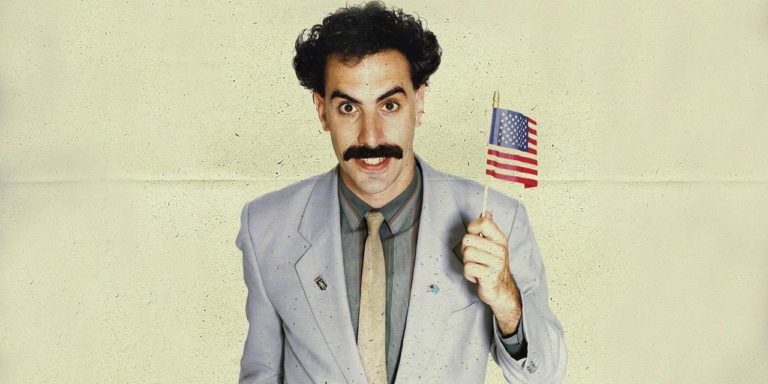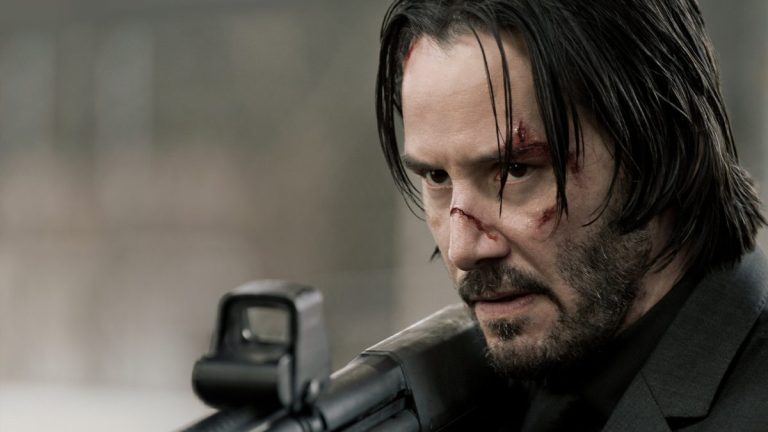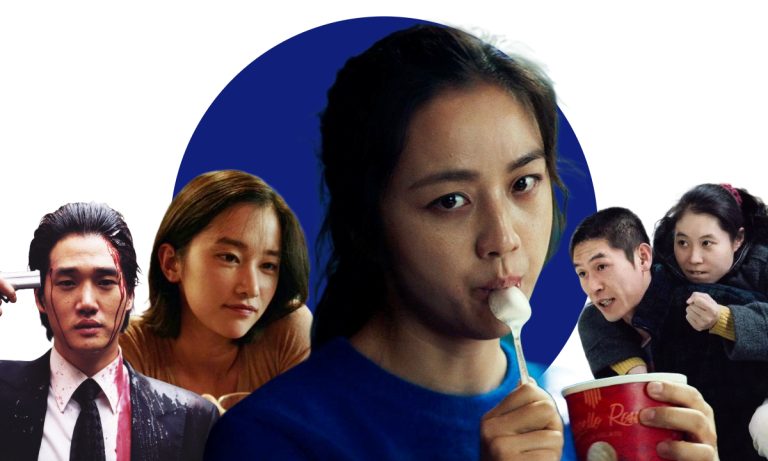Darren Aronofsky is one of the most important American filmmakers working today. His distinct and intense exploration of the darkest aspects of the human psyche captivates as well as devastates us. Born to teacher parents (Abraham and Charlotte) on Feb. 12, 1969, cinema piqued Aronofsky’s interest from a young age.
He studied social anthropology and film at Harvard and received an MFA in directing in 1994. Darren Aronofsky was actually heading toward a career in social anthropology, and before joining Harvard, he backpacked through Europe, the Middle East, and Africa. Aronofsky’s senior thesis film, Supermarket Sweep (1991), won several film awards. After college, he founded his production company, Protozoa Pictures, with Scott Franklin and Eric Watson.
Darren Aronofsky’s microbudget debut feature, Pi (1998), was a critical and commercial success. His ability to stylistically visualize psychological agony is evident in his first film itself. From then on, he has crafted complex genre films and heartbreaking character studies, never forgetting to instill them with a pulsating intensity.
From examining obsession, addiction, to self-destruction and self-mutilation, Darren Aronofsky often subjects us to nerve-wracking stories that are not for all. Yet his ability to intertwine the unraveling psyche of his characters with incredibly expressive visuals often provides an immersive movie experience. He is also one of the most revered directors of actors (he has directed 6 Oscar-nominated performances).
Now, let’s take a look at the purely subjective ranking of all eight Darren Aronofsky feature films, from the good to the great:
9. Noah (2014)
Even though Noah finds itself in the last position among Darren Aronofsky’s eight feature films, it’s far from being a bad film. In fact, I genuinely believe the filmmaker hasn’t made a single uninteresting movie yet. Noah is Aronofsky’s only big-budget spectacle and his highest-grossing film to date. At 137 minutes, it also has the longest running time among Aronofsky’s movies. As the title suggests, Noah is an interpretation of the story of the flood and Noah’s ark as narrated in the Book of Genesis.
Naturally, Aronofsky takes a lot of creative liberties to convey this tale of the guilt-ridden Biblical hero. The visual and aural makeup in Noah proves that Darren Aronofsky can efficiently helm a blockbuster flick. When I first watched it in the theatre (in 3D), I found it to be an unconventional take on the familiar story, raising thought-provoking questions about faith, greed, free will, and environmentalism.
It is not a novelty to showcase the struggles of the Biblical heroes in a relatably human manner. Yet Aronofsky’s distinct vision, layered writing (he co-wrote the script with Ari Handel), and the fantastic central performances (from Russell Crowe, Ray Winstone, and Jennifer Connelly) make Noah a memorable re-imagination. The film is an exciting amalgamation of blockbuster spectacle and philosophical drama. There are quite a few silly and overwrought elements in the narrative. But at no point does Darren Aronofsky settle for uninspired mediocrity. He has always been a fervent filmmaker with a high artistic ambition, which is what defines this film’s grand ideas and uncanny drama.
8. Caught Stealing (2025)
“Caught Stealing,” the latest film from Darren Aronofsky, marks a notable departure from the director’s usual stylistic intensity. Adapted from the 2004 novel of the same name by Charlie Huston, the film, much like Paul Thomas Anderson’s One Battle After Another, stands out as one of Aronofsky’s most approachable works. Where his previous films often immersed audiences in feverish psychological unraveling, this one adopts a leaner, pulpier tone.
The narrative follows Austin Butler’s Hank Thompson, a once-promising baseball player turned weary, traumatized bartender. Surrounded by eccentric figures making increasingly reckless choices, Hank is swept into a crime caper filled with unpredictable twists. Aronofsky orchestrates this escalating chaos with playful precision, favoring brisk genre storytelling over the operatic intensity of his earlier work. Yet beneath this accessibility lies a familiar preoccupation with fractured psyches — Hank’s bewilderment and mounting despair mirror the downward spirals of many Aronofsky protagonists.
While the film may lack the stylistic bravado of “Requiem for a Dream” or “Mother!,” its dark humor, lively pacing, and controlled unpredictability make it thoroughly engaging. Rather than a grand artistic statement, it functions as an experiment — a director testing new textures without abandoning his thematic core. A “lesser” Aronofsky, perhaps, but an undeniably intriguing and unexpectedly entertaining one.
7. Pi (1998)
This strikingly off-beat directorial debut of Darren Aronofsky establishes one of the filmmaker’s pet themes: obsession. Made on a ridiculously low budget of $60,000, Pi chronicles the murky depths of a genius mathematician’s life as he gradually loses his mind. Max Cohen (Sean Gullette – who also starred in Aronofsky’s senior thesis short film “Supermarket Sweep”) is a passionate number theorist who hopes to decipher nature’s mathematical patterns, which could possibly decipher the chaos of existence. As he embarks on a bleak journey to comprehend the pattern behind life itself, enduring nosebleeds and excruciating headaches, irrational obsession replaces Max’s scientific rigor.
Shot in a high-contrast black-and-white 16mm format, the coarse visuals and screeching sound design efficiently depict the distorted reality of Max’s world. Like most of Darren Aronofsky’s polarizing movies, Pi is not for all tastes. Yet its propulsive energy and the larger themes that intertwine math, mysticism, and madness make it one of the most fascinating directorial debuts ever.
Pi showcases what later became Aronofsky’s trademark themes and narrative tropes. The intricately detailed downward spiral of the protagonist, religious references, and complicated expression of faith; disorienting and hyper-stylized imagery that traps you in the protagonist’s mindscape; the stunningly ambiguous denouements – a blueprint of Aronofsky’s oeuvre can be found in Pi. The film also marks the beginning of Aronofsky’s long and fruitful collaboration with cinematographer Matthew Libatique and composer Clint Mansell.
Related to Darren Aronofsky Films: 15 Great Films About Troubled Geniuses
6. The Fountain (2006)
After the success of Requiem for a Dream, Darren Aronofsky ran into a lot of trouble in realizing his epic time-hopping drama on mortality and love. The Fountain was initially a $70 million budget film with a star cast of Brad Pitt and Cate Blanchett. However, production came to a halt when Brad Pitt pulled out of the movie due to creative differences. Then, with budget cuts ($35 million) and a trimmed-down, revised script, Aronofsky went to shoot with Hugh Jackman and Rachel Weisz. Despite its awe-inspiring visuals, The Fountain was still a very unconventional, genre-defying film that flopped at the box office.
I acknowledge that The Fountain is an uneven and flawed film. Yet, the strong emotional connection, fabulous mise en scene, and phenomenal performances from the lead actors make it a remarkable achievement in Aronofsky’s oeuvre. The narrative takes place over three timelines, which are somehow interconnected. But the most profound and moving among the three is Dr. Tommy Creo’s race against time to find a cure for his wife’s terminal illness.
The Fountain is devoid of the high-octane editing technique Aronofsky followed in his previous two films. He takes a more stately approach to stage this grandiose tale. The Fountain is the first of three Darren Aronofsky films to directly refer to the Book of Genesis and the creation myth. Although the film deals with themes of grief and obsession, unlike Aronofsky’s other films, it is more poetic and hopeful and less depressing.
5. The Whale (2022)
Darren Aronofsky’s films are never known for their subtlety. His narrative often has melodramatic elements. Like all his unflinching character studies of self-destructive individuals, in The Whale, too, Aronofsky plays with his viewers’ emotions but, as always, does so in a surprisingly delicate manner.
Despite the controversial subject and shock factor, the measured restraint in the staging and the nuanced performances create a compelling portrait of loneliness, grief, guilt, and redemption. The Whale, adapted by Samuel Hunter from his own 2014 play, is a chamber drama that revolves around 600-pound middle-aged Charlie (Brendan Fraser), a shut-in teaching English online. He is cared for by a healthcare worker friend, Liz (Hong Chau).
Charlie has resigned himself to the fact that he is dying and wants to make amends with his estranged teenage daughter, Ellie (Sadie Sink). The narrative is structured through a series of people who visit Charlie, including his ex-wife, Mary (Samantha Morton), and a young evangelist, Thomas (Ty Simpkins).
The Whale opens by evoking feelings of disgust and horror in relation to Charlie’s physical appearance. But gradually, Aronofsky guides us through Charlie’s troubled inner life to understand his trauma and irreparable loss with empathy. The more we emotionally share the space with Charlie, the more we see him as human and feel distressed by the people’s horrified reaction towards him. Brendan Fraser’s astounding central performance is pivotal to bringing forth Charlie’s fragile psyche. He elicits tenderness through little gestures. The drama is lumbering at times, yet it’s an unforgettable movie on redemption and human fallibility.
4. mother! (2017)
While Darren Aronofsky is one of the most polarizing filmmakers in recent memory, none of his films evoked such wildly extreme reactions in viewers as his psychological horror mother! Like all his films, mother! relentlessly builds towards a fiery crescendo of violence. However, the allegorical proportions of the narrative and the sheer absurdity and madness we witness on-screen are distinct and unexpected, even for an Aronofsky flick.
In fact, mother! makes his previous film, Noah (2014), look like a doctrinal interpretation of a Biblical story. Here, Aronofsky opens the tale in the classic Roman Polanski territory with a childless married couple living in an isolated, stately mansion.
The husband, addressed as ‘Him’ (Javier Bardem), is a tortured artist afflicted with writer’s block. The wife, called ‘Mother’ (Jennifer Lawrence), yearns for love and supports her husband. Soon, their routine is disrupted by a strange couple (Ed Harris & Michelle Pfeiffer) who exploit the husband’s generosity. Jennifer Lawrence is brilliant in expressing her character’s growing sense of unease, as her presence is often completely disregarded. At one point, the strange couple leaves the house. But more dizzying and bewildering events await the mother as the husband is cured of his writer’s block.
mother! is an incendiary allegory for the Biblical Creation story. It’s fascinating how Aronofsky uses the shell of a domestic discord drama to present a vehemently exaggerated take on the human condition and its destructive streak. Undoubtedly, it is a self-indulgent work. Yet, I enjoy how it catches us off-guard with a bonkers of a final act. Moreover, the film gets better in the rewatches as we submit ourselves to the whirlwind of chaos and unrestrained imagination.
Related to Darren Aronofsky Films: 20 Most Anxiety-Inducing Movies of the 2010s Decade
3. Black Swan (2010)
Stories of creative artists with unhealthy obsessions are common in cinema even before the making of Powell & Pressburger’s masterpiece, The Red Shoes (1948). However, this eerie downfall of a ballerina pursuing perfection finds the right visual storyteller in Darren Aronofsky. The narrative revolves around Natalie Portman’s Nina Sayers, a talented yet timid ballerina who desperately seeks the dual lead roles in the opening season of Tchaikovsky’s “Swan Lake.” The lecherous artistic director (Vincent Cassel) considers Nina as his first choice. Yet a promising newcomer, Lily (Mila Kunis), threatens to replace Nina. But as Nina strives to embody both Odette (White Swan) and Odile (Black Swan), she pushes her mind and body beyond its limits.
While the premise is simple enough, Aronofsky’s detailing of Nina’s mental anguish and crumbling reality makes us watch the film with nervous anticipation. Doubles and mirrors play a pivotal role as Aronofsky’s flair for showmanship and shock is at full display. Written by Mark Heyman, Andres Heinz, and John McLaughlin, Black Swan is a painful character study as Nina increasingly treads into treacherous territory.
Darren Aronofsky has consistently extracted incredible performances from his actors. Natalie Portman’s Oscar-winning performance evidently shows that the actor took great pains to showcase the gruesome physical and emotional toll on Nina. Portman is particularly great when Nina finally lets herself go as the narrative reaches a fervent crescendo towards the end. Like all of Aronofsky’s dark, uncomfortable parables, Black Swan, too, barely gives us time to catch our breath.
2. The Wrestler (2008)
The Wrestler was a comeback of sorts for Darren Aronofsky after the critical and commercial failure of the ambitious sci-fi drama The Fountain. Here, he goes for a pretty straightforward material, tracking a pro-wrestler’s emotionally and physically battered life on the margins. Mickey Rourke, the handsome star of the 1980s (Diner, Rumble Fish, Angel Heart), briefly revitalized his acting career by playing the muscled-up and broken-down Randy the Ram.
Written by Robert Siegel, The Wrestler shows Randy at his lowest as he struggles to make money, juggling between the scaled-down weekend fights and working on the loading dock at the supermarket. There are talks of his halcyon days (in the late 1980s) when he battled the ‘evil’ Ayatollah. Now, with a failing heart and an estranged daughter (Evan Rachel Wood), Randy finds it hard to maintain his pride amidst feelings of guilt, shame, and regret.
Much of The Wrestler’s themes and narrative beats find its echo in Aronofsky’s The Whale, although Randy’s account of suffering and quest for salvation is more nuanced. Aronofsky’s fascination with the human ability for self-punishment persists in the film as he gruesomely captures a bloody match involving a staple gun. At one point, Randy’s self-mutilation draws comparisons to Christ himself.
The Wrestler is perhaps Aronofsky’s most accessible film because it isn’t hyper-stylized like most of his films. He just tenaciously follows Rourke’s Randy as the man bares his soul with brutal honesty. One of the poignant aspects of The Wrestler is the fragile connection between Randy and aging stripper Cassidy (Marisa Tomei). Tomei’s tender and daring performance earned her a Supporting Actor Oscar nomination.
Related to Darren Aronofsky Films: 10 Best Pro-Wrestling Movies, Ranked
1. Requiem for a Dream (2000)
It’s intriguing how a filmmaker who had enjoyed decent success with his independent directorial debut chose to adapt a seemingly unfilmable novel for his second film. Moreover, the filmmaker has to tackle the challenging and distressing subject of addiction. Hubert Selby Jr.’s 1978 novel Requiem for a Dream is written in the disorienting stream-of-consciousness mode, full of rambling interior monologues that meticulously capture the characters’ slow descent into hell. Darren Aronofsky, who co-wrote the script with Hubert himself, utilizes virtuosic and frenzied visual language to transplant the raw and disturbing visions to the screen.
Requiem for a Dream revolves around Harry (Jared Leto), his mom, Sara (Ellen Burstyn), Harry’s girlfriend, Marion (Jennifer Connelly), and Harry’s friend, Tyrone (Marlon Wayans). While Harry, Marion, and Tyrone find themselves in the inescapable grip of heroin addiction, Sara, the lonely widow in pursuit of validation and happiness, falls into the abyss of amphetamine use disorder.
Bolstered by Libatique’s outstanding cinematography and a haunting musical score by Clint Mansell, Requiem for a Dream immerses us in the terrifying emotional and physical states of its characters. We feel as if we are trapped in their confined world of delusion and despair. Unlike the other distressing films in Aronofsky’s oeuvre, Requiem for a Dream doesn’t offer any brief respite as the four individuals plunge headlong into the depths of human misery.
Read More: How “There Will Be Blood” and “Requiem For A Dream” Explore The Rotten American Dream
While the film’s message and plot are familiar, Darren Aronofsky’s spellbinding array of visual techniques leaves an indelible impression. Moreover, the soul-shattering performances of the four central characters are absolutely great, especially Burstyn’s pensive monologue, which remains the crux of the film.


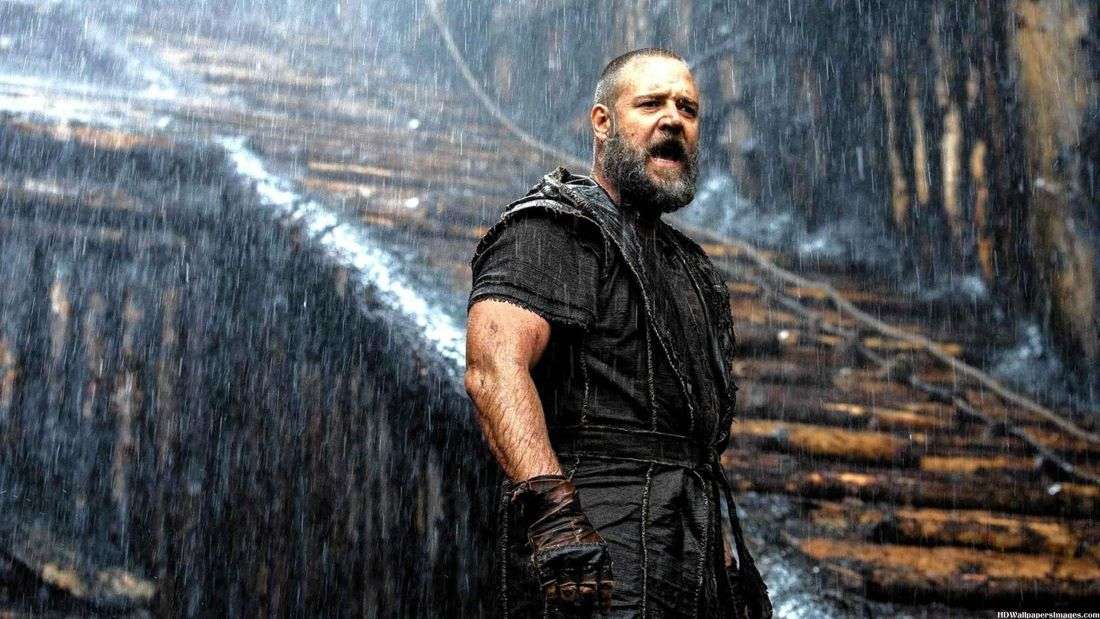
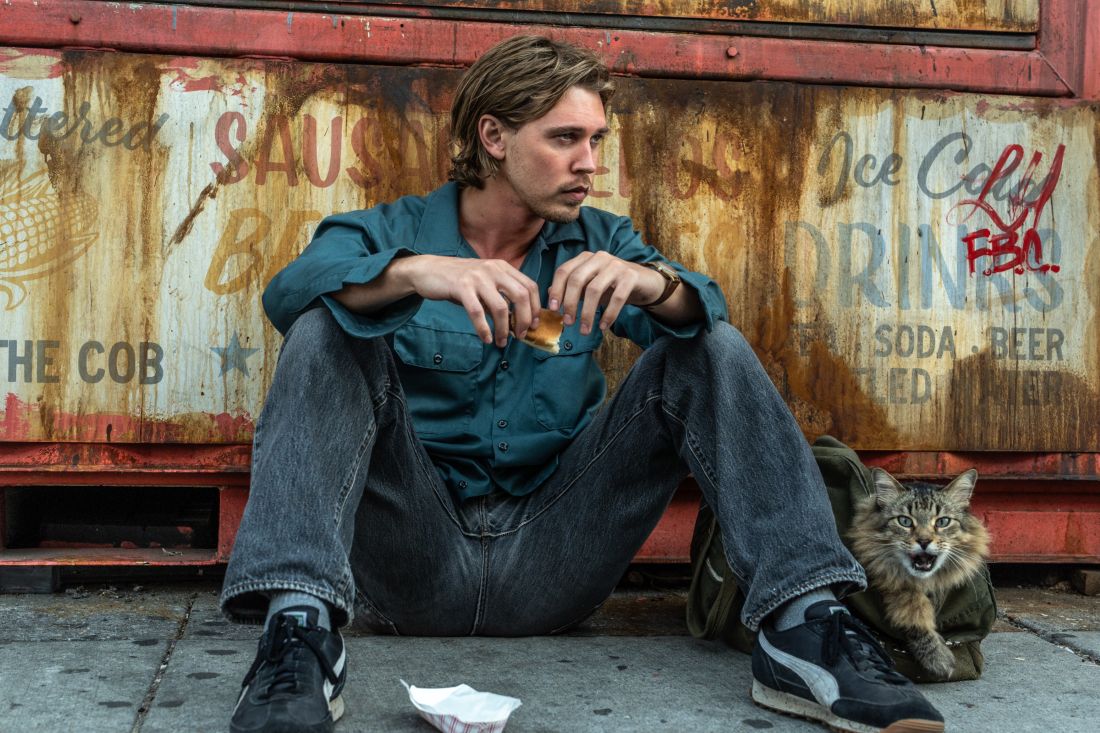
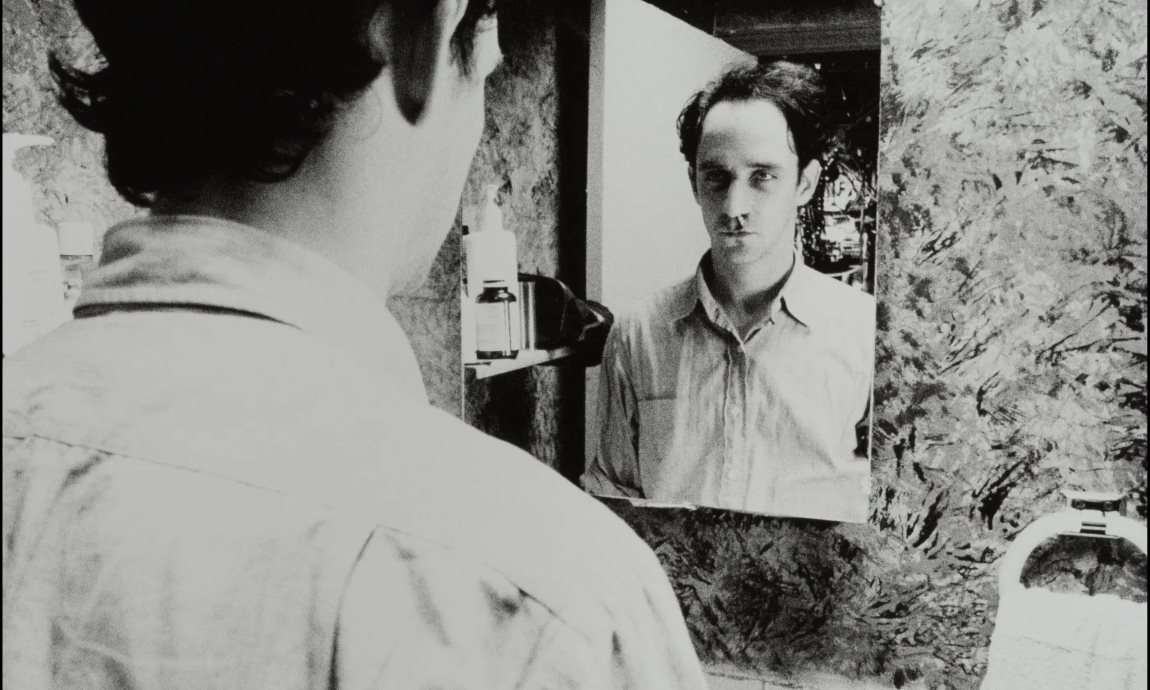
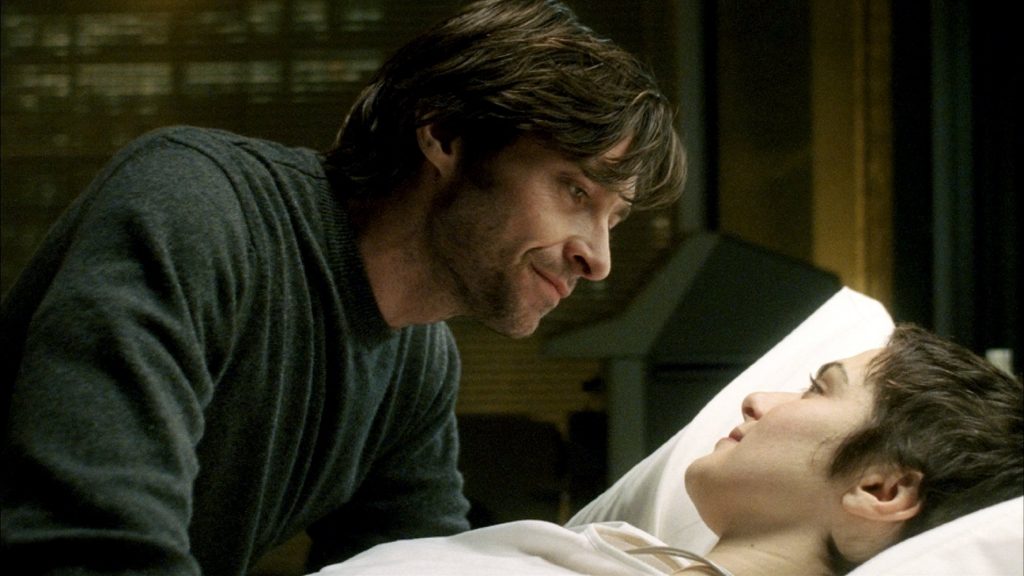
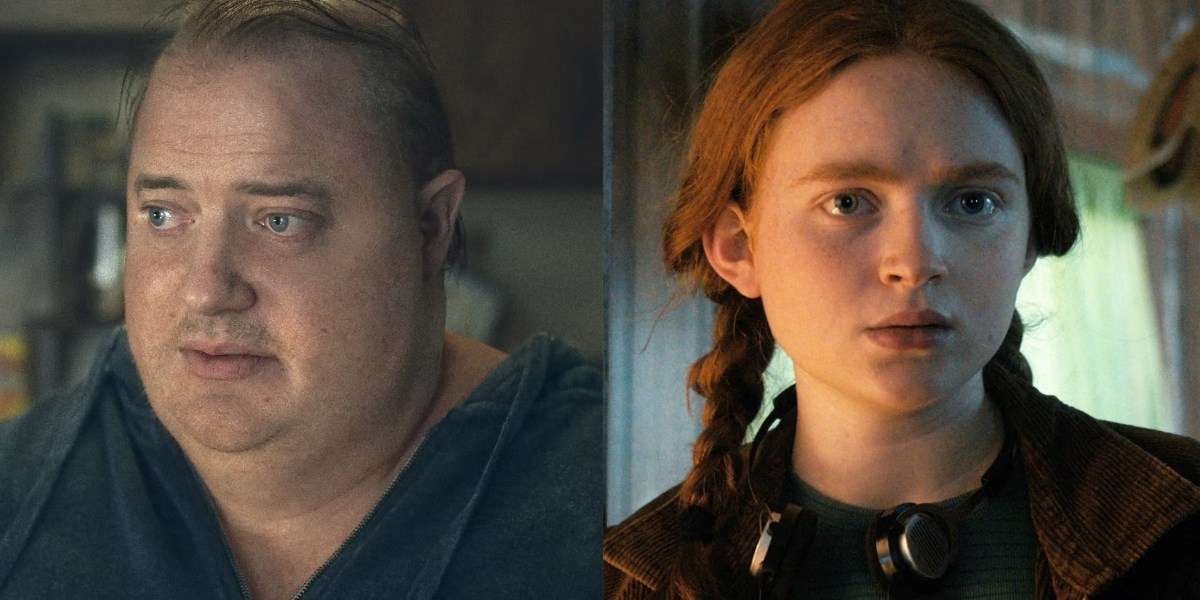
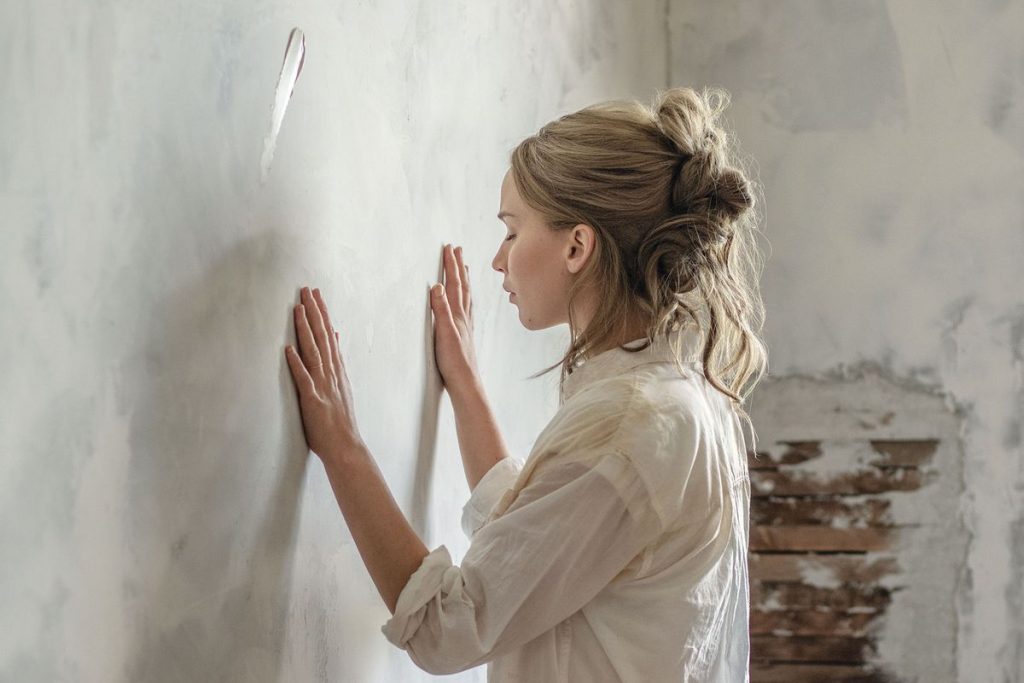
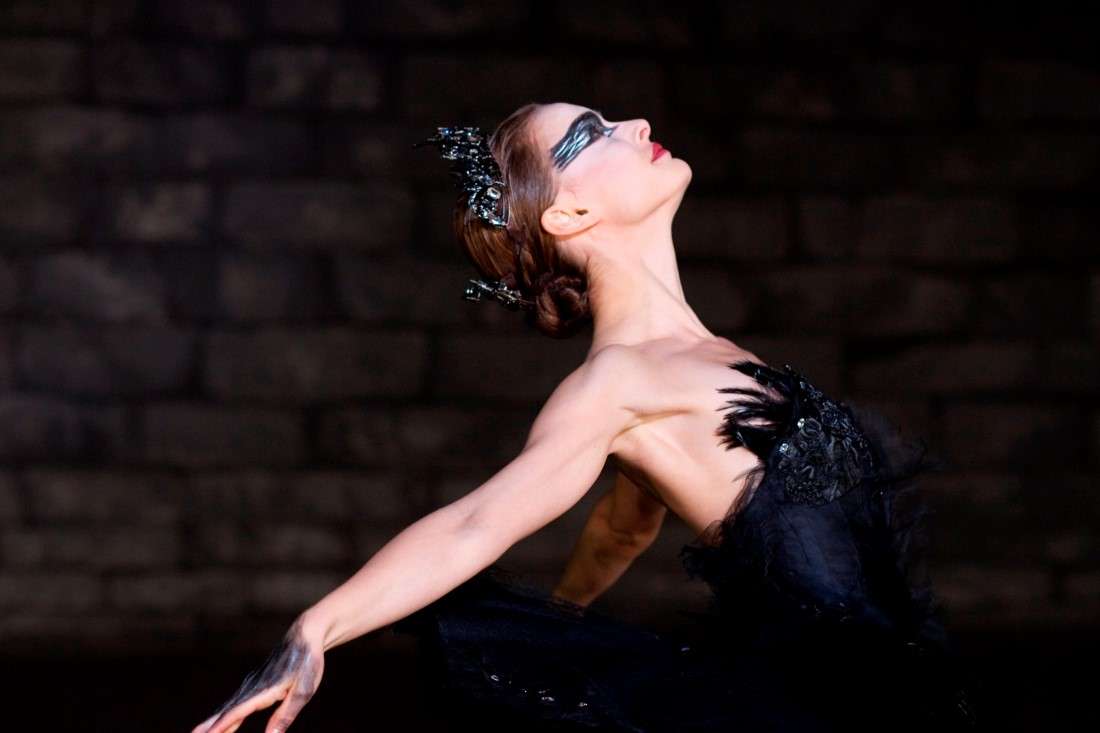
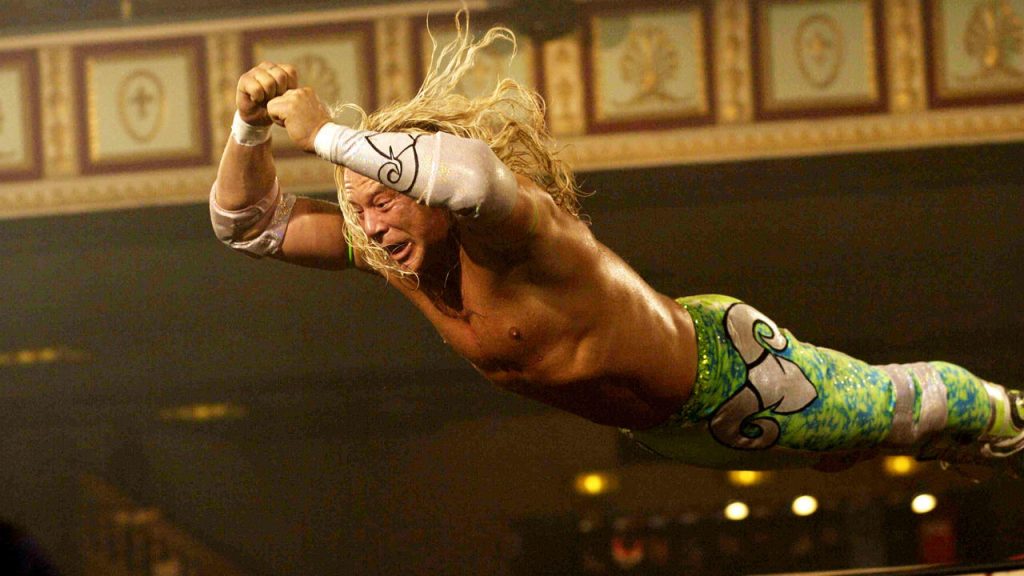
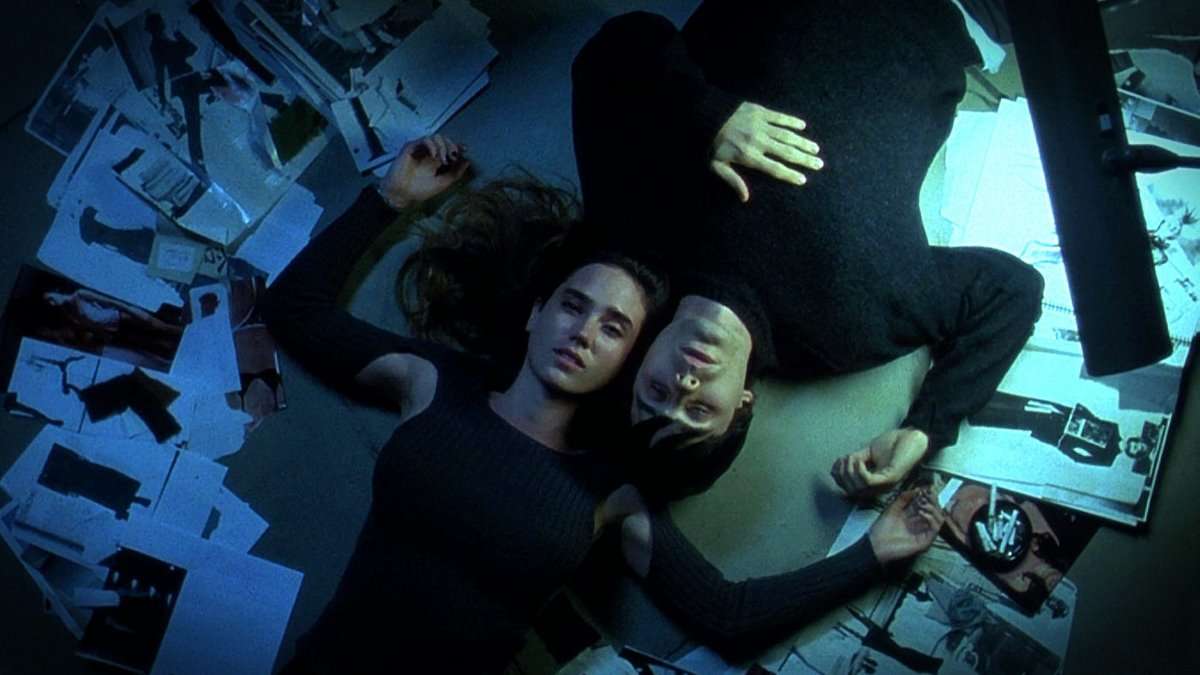


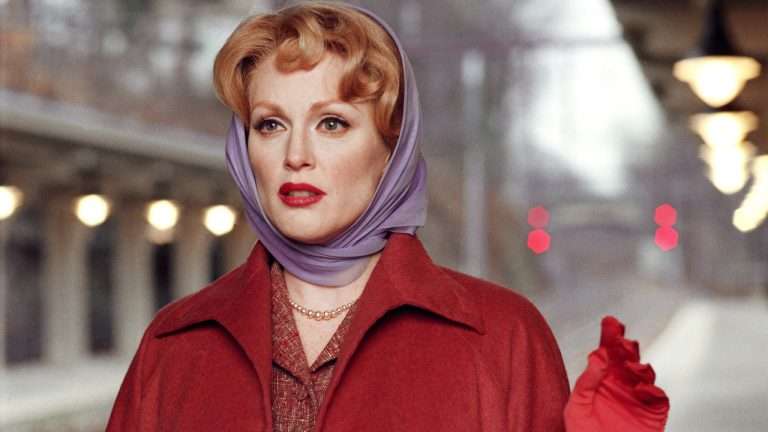
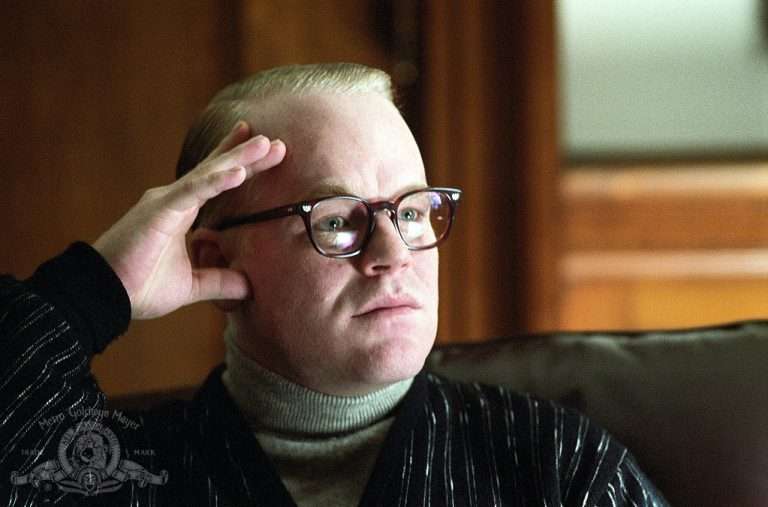
![Beginning [2020]: ‘MUBI’ Review – We Live In a Patriarchy, Let’s Begin There](https://79468c92.delivery.rocketcdn.me/wp-content/uploads/2021/04/Beginning-1-highonfilms-768x432.jpg)
